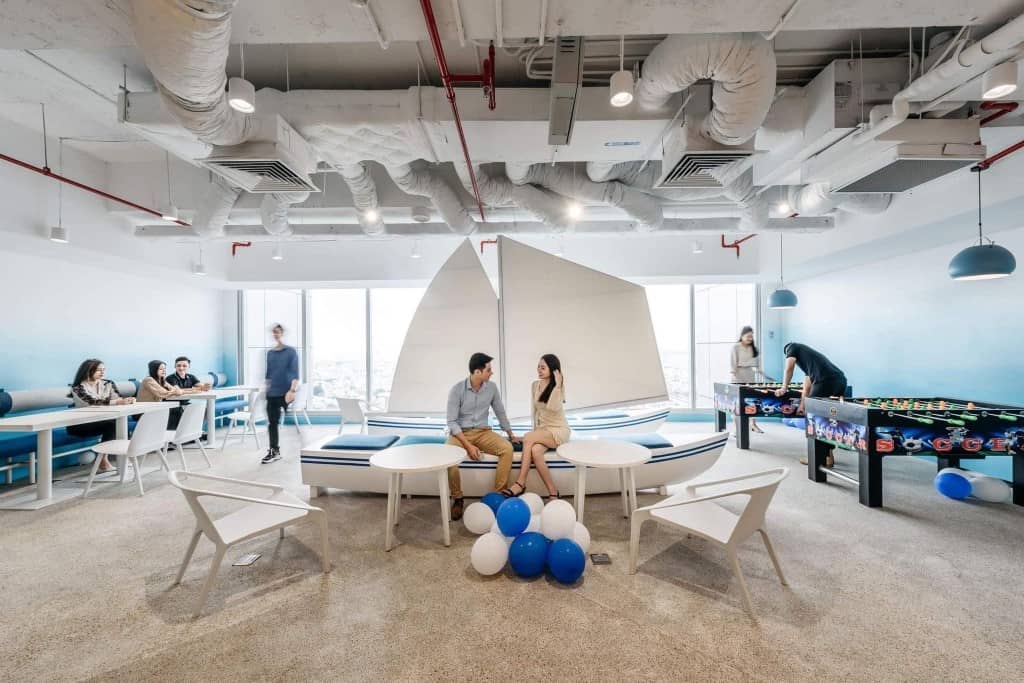
Organizations have seen massive transformations in how they operate over the last few years, accelerated by COVID-19 in 2020. Flexible work schedules, remote team members, and an emphasis on the employee experience are just a few of the priorities for today’s businesses.
There is now a well-defined vision for the future of work. Companies are increasingly embracing a hybrid work model that combines remote work with office hours.
Effectively managed hybrid work models enable organizations to define a future of work that is more flexible, digital, and rewarding for their employees. This results in a plethora of business benefits such as improved access to top talent, happier employees, and increased innovation.
What is the Hybrid Work Model?
The hybrid workplace is a business model that combines remote and in-office work.
Rather than organizing the workday around a desk in a physical office space, it creates a flexible work schedule that allows employees to split their time between working from home and coming into the office.

For companies that have adopted a hybrid work model, the way employees work in a physical office has changed. Physical office spaces are now reserved for in-person meetings and team collaboration, with other days of the week set aside for working from home.
(RELATED: Top Reasons Why Singaporean Companies are Shifting to a Hybrid Work Model)
Time spent in the office is now devoted to collaborative projects. This could include presentations, team building exercises, introducing new projects, or any other task that requires you to bring your employees together for face-to-face communication.
There is no set or ideal number of days that employees must spend in the office in order to build a hybrid work model. It could range from working in a physical office just one day per week to three or four days per week, or even a monthly schedule where the entire team is onsite for certain days to collaborate. If your company has employees who are able to work from home and in the office, you are managing a hybrid workforce.
Here are the important factors businesses and employers need to consider when shifting to a hybrid work model:

1. Wage and labor regulations
If your company intends to continue allowing some on-site time for remote team members, payroll and compliance issues should be relatively simple to handle. However, if your employees are paid on an hourly basis rather than a salary, you must be more vigilant to avoid time clock fraud. Managers must collaborate to determine the best way to monitor their off-site employees’ work activity and properly document absences.
These variations can complicate and lengthen the compliance, payroll, policy, termination, and onboarding processes. To alleviate the problem, some companies may consider a hybrid work model in which they only hire remote employees in the United States where they already have established offices or in-person work sites. If your company decides to go this route, include a statement in the job description stating that you are hiring. This allows you to save time for both yourself and the applicant.

2. Collective ownership
Responsibility is an important aspect of running a business because it ensures that the environment is safe for everyone. When an organization finally reopens its doors to allow employees back into the office space, they must take responsibility for ensuring that their employees are as safe as possible. They must take all necessary precautions to protect their employees’ health. Guidelines for social distance hygiene, for example, must be established in order to provide a clean environment.
To be effective, however, every employee must share collective ownership of keeping things safe. The concept of everyone being in it together becomes a reality, rather than just a slogan spread on social media. Everyone in the workplace has a role to play in keeping the workplace safe by exhibiting proper behavior.

3. Cybersecurity
Off-site employees will occasionally require access to sensitive customer information or company data. Business leaders must consider how they will ensure that there are no leaks during this process. Department heads must collaborate with IT to ensure that adequate data security measures are in place. Request that the IT team perform the necessary equipment checks and employee cybersecurity training.
If your company is in a highly regulated industry, double-check your policies before allowing your employees to work off-site.
(READ: 6 Ways to Stay Cyber Safe While Working Remotely)

4. Balance
When it comes to implementing a hybrid work model, balance is critical. Regardless of how your organization decides to implement the hybrid work model, it must be able to provide employees with a sense of balance. If you are offered a rotating schedule, the majority of the balance aspects are already established for you, with specific days of working in either setting. When an employee is assigned to stay at home or come into the office, they must take charge and find a balance by requesting a different time or finding alternative work locations.

5. Training
The training process is another important aspect of the hybrid work model that must be considered. How can your organization ensure that executives and managers have the necessary training to deal with this new way of working?
Training programs will be needed to ensure that they know what to do throughout the process. They’ll need the right tools to manage a hybrid workforce both in and out of the office. Companies must also consider whether their current training is adequate to assist employees and whether it provides them with the skills required to handle this new working environment.
Another thing to consider is how the training will look when not everyone can be physically present in the same room. Because not everyone will be on-site or in a single room, it should not be treated in the same way as it was before COVID19.
Not everything, however, must be thrown out the window. The current training program can be modified to complement the new working environment. It should concentrate on the skills that your team may be lacking, especially if you are using technology that they are unfamiliar with but are required to maintain this hybrid work model.
(RELATED: 8 Tips to Conduct Effective Training Sessions)
Wrapping Up
When it comes to transitioning to a hybrid work model, there is no way to predict what can and cannot be done. Every company will have its own hybrid model style because it is unique to its situation. When establishing its hybrid model, your organization must take the time to consider what may and may not work. Consider what we’ve written and expand on it with what you know about your company.

CEO